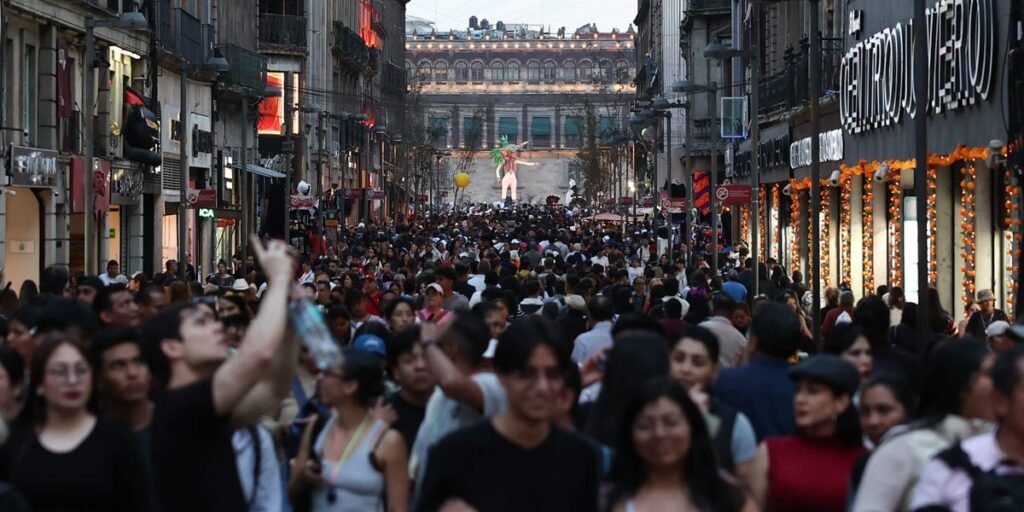X
Bluesky
Copy link
Impact Link
Save
Saved
Read in app
subscribers. Become an Insider
and start reading now.
Have an account? .
- Destinations around the world are feeling the pinch of overtourism.
- Fodor’s travel guide’s annual “No List” highlights destinations to rethink visiting in 2026.
- Destinations like Antarctica, the Canary Islands, and Montmartre are facing tourism pressures.
The travel bucket list, or a catalog of places you must go, has long been a thing, but with the rise in global tourism — and subsequent strains of overtourism — there’s increasing talk about where not to go.
International tourist arrivals increased 5% globally in the first half of 2025 compared to the same time period a year prior, surpassing pre-pandemic levels, according to the United Nations World Tourism Organization.
Fodor’s, a long-standing travel guide company, compiles an annual list of places that travelers should reconsider visiting due to the potential negative impacts of rising tourism.
The recently released “No List,” which outlines eight places that travelers should rethink visiting in 2026, includes a far-flung continent, a United States national park, and some popular city destinations.
Fodor’s says the list is not a call for a total boycott but instead meant to “highlight destinations where tourism is placing unsustainable pressures on the land and local communities.” Conversely, Fodor’s also compiles an annual “Go List,” with the latest edition highlighting 26 of the best places to visit next year.
Here are the eight destinations that made the “No List” for 2026.
Antarctica
JUAN BARRETO/AFP via Getty Images
While Antarctica, one of the most remote places on the planet, isn’t overrun with tourists in the same sense that Venice is, the continent may be welcoming more visitors than it can responsibly accommodate, according to Fodor’s.
The number of tourists visiting Antarctica increased tenfold between 1992 and 2020, according to the International Union for Conservation of Nature. The group says travel to Antarctica has a high carbon footprint and can damage sites visited by travelers as well as disturb wildlife.
The IUCN and other conservation groups have called for additional measures to protect Antarctica’s wildlife and ecosystem as tourism increases.
The Canary Islands
Marcos del Mazo/LightRocket via Getty Images
Spain’s Canary Islands draw millions of tourists every year, prompting local concerns about crowding and traffic, rising housing costs, and environmental impacts.
There have been multiple protests against overtourism on the Canary Islands in recent years, with thousands of people taking to the streets with signs that read things like “Canaries have a limit.”
Glacier National Park
JOSH EDELSON/AFP via Getty Images
Glacier National Park in Montana was one of the most visited national parks in 2024, with more than 3.2 million visitors.
In 2020, the park instituted a timed reservation system during the busy summer months to handle the increase in visitors, but concerns remain around increased traffic and congestion, higher risks of wildlife disturbance, and a rise in carbon emissions and threats to air quality.
Isola Sacra
DEA / S. VANNINI/Getty Images
Isola Sacra, located southwest of Rome, is a historic coastal community in Italy home to some ancient Roman ruins.
Italian officials have approved a plan for a new port that will allow large cruise ships to dock in the town. The plan has been controversial among locals of Isola Sacra, with community groups protesting the development, citing potential harm to local ecosystems.
Local authorities have said the port will bring employment to the community and that the plan includes measures to protect the environment.
The Jungfrau Region in Switzerland
MARCO BERTORELLO/AFP via Getty Images
The Jungfrau Region in Switzerland is a major attraction for visitors to the Alps, with its alpine lakes and dramatic peaks.
But the region is struggling to manage its tourism boom while protecting the natural environment and quality of life for the area’s locals, according to Fodor’s.
Mexico City
Jakub Porzycki/NurPhoto via Getty Images
Mexico City has been a booming tourism destination in recent years, leading to concerns about rising housing costs and cultural loss in the city center.
Demonstrators gathered in Mexico City in August to protest tourism, gentrification, rent hikes, and the rise in short-term rentals.
Mombasa
credit should read TOBIN JONES/AFP via Getty Images
Kenya has seen a notable rise in tourism since the pandemic, with cruise ships bringing an influx of visitors to cities like Mombasa.
The historic Kenyan city is already experiencing the impacts of rising tourism, with some cultural sites overrun by visitors, leading to congested roads, overcrowding, and littered beaches, Fodor’s said.
Mohamed Osman, minister for Tourism, Culture, and Trade in Mombasa County, told Fodor’s that measures are currently being developed to address concerns with overtourism.
Montmartre
LordHenriVoton/Getty Images
Montmartre, a picturesque Paris neighborhood popular with visitors, has experienced overtourism impacts like rising prices and the displacement of locals.
Residents have protested against the “Disneyfication” of Montmartre, as the French newspaper Le Monde reported, citing a decline in stores catering to locals and lines of tourists trying to capitalize on a good photo op.

